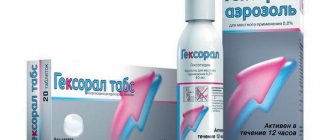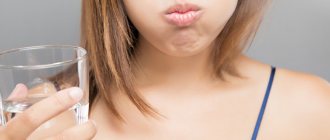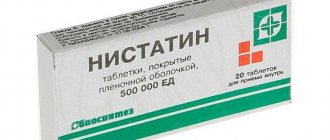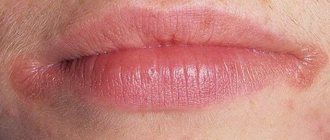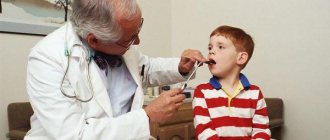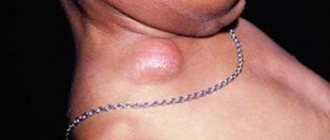There are restrictions during pregnancy
Has restrictions when breastfeeding
Has restrictions for children
Can be taken by older people
Can be taken for liver problems
Can be taken for kidney problems
For the treatment of inflammatory and infectious diseases of the oral cavity, it is most rational to use local drugs. Cholisal is a popular and effective gel that belongs to the group of non-steroidal anti-inflammatory drugs and is used in dentistry. It is prescribed for the following pathologies:
- candidiasis and other fungal infections;
- stomatitis of various etiologies, including bacterial;
- cheilitis;
- periodontitis;
- ulcers and erosions of mucous membranes.
The drug can be used as a local anesthetic during dental and minor surgical procedures in the oral cavity, as well as to alleviate the condition in children during teething.
Composition of the drug
Cholisal contains two active ingredients:
- Choline salicylate is a derivative of acetylsalicylic acid. Has an analgesic effect. When applied topically, it helps to quickly get rid of signs of inflammation such as pain, swelling, and redness. The mechanism of action is associated with blocking the activity of the enzymes cyclooxygenase and thromboxane synthetase, which take part in the synthesis of inflammatory mediators - prostaglandins and leukotrienes.
- Cetalkonium chloride is a broad-spectrum antiseptic. Most bacteria, viruses and fungi are sensitive to it.
Cholisal has a gel base, which adheres well to the mucous membrane and is not destroyed by salivary enzymes. The drug is produced in Poland. The price of this drug is quite high and, if necessary, Cholisal is replaced with one of the cheaper analogues.
Pharmacology and pharmacodynamics
The gel helps fight inflammation, relieves pain and has an antimicrobial effect.
The active substance perfectly anesthetizes the area to which the gel was applied and eliminates inflammation. The analgesic effect lasts for 3-8 hours. Another active component has an antiseptic effect, killing harmful microorganisms.
The medicine has a certain structure, due to which it penetrates well into the tissue and remains on the oral mucosa for several hours. Almost does not enter the blood circulation.
Cholisal: composition, release form
Cholisal is a modern dental drug with a pronounced analgesic, anti-inflammatory and antibacterial effect. The gel acquires its unique healing properties thanks to a combination of the following active ingredients:
- Anise oil (1.6 mg per 1 g of gel) is a natural oil that has a calming effect on inflammation and kills pathogenic microorganisms;
- cetalkonium chloride (87.1 mg per 1 g of gel) – a broad-spectrum antiseptic;
- Choline salicylate (100 mcg per 1 g of gel) is an analgesic that also relieves inflammation.
Auxiliary components: 50 mg of glycerin, up to 1 g of water, 390 mg of ethyl alcohol, 20 mg of hyaetellose, 1.5 mg of methyloxybenzoate, 0.8 mg of propyl parahydroxybenzoate.
Why is this composition so good?
When most dental preparations that are used topically differ only in their superficial effect, Cholisal gel penetrates into the deep layers of the oral mucosa. This property is given to the gel by the active substance choline salicylate. The component formed from salicylic acid acts on the site of inflammation, blocking inflammatory mediators in the oral mucosa. The analgesic component has a light structure, so it penetrates quite deeply into the layers of the mucous membrane.
Cholisal gel acts simultaneously on bacteria, fungi and viruses; this universal property is given to it by a broad-spectrum antiseptic - cetalkonium chloride.
The product is available in gel form, 10 g in aluminum tubes, sealed cardboard packs.
When to use
The gel is prescribed in the following cases:
- stomatitis;
- cheilitis;
- damage to the integrity of the mucosa due to the use of prostheses or as a result of mechanical impact;
- pain relief after dental surgery;
- when teething in babies;
- other damage and inflammatory processes in the oral mucosa.
What does Cholisal help with?
The gel is able to cope with inflammatory processes occurring in the oral cavity and various injuries. The drug should be taken for the following conditions:
- stomatitis;
- mechanical injuries and other damage resulting from wearing prostheses;
- for severe pain, as well as for prophylactic purposes after dental surgery;
- teething in babies;
- gingivitis.
Adverse reactions and overdose
In rare cases, side effects may occur. A tingling or burning sensation may be felt at the sites where the ointment is applied. This reaction usually disappears after a few minutes. Various allergies may also appear.
No cases of overdose have been identified to date. The gel does not need to be swallowed, only used topically. If there is a lot of ointment on the mucous membrane, then you need to rinse your mouth well. If the composition gets into the gastrointestinal tract, you need to rinse the stomach. Treatment is carried out taking into account the existing symptoms.
special instructions
Despite the many advantages and high safety of the drug, dentists all recommend adhering to several rules:
- Gel in large doses can enhance the effect of antipyretics, analgesics and anti-inflammatory drugs, so it is especially important to monitor the dose of the gel used if you take such drugs.
- Women during lactation and pregnancy, as well as children under 1 year of age, are advised to use the gel with caution.
Reviews
Regarding the use of the gel during teething, you can find mostly positive reviews. The drug quickly and effectively copes with inflammatory processes, relieves pain and cools the affected area. If you use the product the night before going to bed, its effect will last almost until the morning. It also has an antipyretic effect. For many, it is a plus that the composition does not contain lidocaine, since it can provoke various and severe allergies.
There are also many positive reviews when using ointment for stomatitis. Within 3-5 minutes you can notice a significant improvement in your condition, pain and discomfort disappear. Inflammation disappears 15-20 minutes after application. If you apply compresses before going to bed, you can quickly get rid of the problem and its symptoms.
How to use Cholisal gel
The instructions indicate that the ointment is for external use only. It should be applied exclusively to the affected area of the mouth.
The product should be applied 20 minutes before or after meals. You can also rub the ointment in before going to bed. The procedure can be repeated up to 3 times a day. It will be enough for a child to use 0.5 cm, and for an adult – 1 cm.
If a person suffers from periodontal disease, then the ointment can be placed in the gum pockets that appear or effective compresses can be made.
How does thrush develop?
At the initial stage, the fungus penetrates the cells, where it begins to multiply and secrete enzymes that irritate the mucous membrane and dissolve surrounding tissues. In this regard, candidiasis causes swelling, redness, increased sensitivity, a feeling of dryness and soreness in the mouth. As the disease develops, a white cheesy coating forms on the mucosa, consisting of destroyed epithelial cells, fibrin, keratin, food debris and bacteria. At the initial stage, candidiasis in adults looks like small white grains, which subsequently increase in number and size. As the disease progresses, plaque turns into large plaques or a milky film. In the absence of timely treatment for thrush in the mouth, the affected areas begin to merge with each other, covering the inner surface of the cheeks and lips, gums, tongue, palate, and tonsils.
Causes of candidiasis in the mouth
Candidiasis in the mouth most often affects children, especially infants. In adults, thrush is much less common. People over 60 years of age are at risk, especially those who wear dentures, as well as people suffering from various diseases that cause decreased immunity. Among the factors contributing to the development of candidiasis in adults are:
- immunodeficiency states;
- pregnancy (the causes of thrush are metabolic disorders, changes in hormonal levels, decreased immunity);
- diabetes mellitus, HIV, tuberculosis and other serious diseases;
- prolonged or uncontrolled use of antibiotics and other medications that reduce the body's defenses;
- dysbacteriosis and other gastrointestinal diseases;
- lack of vitamins B, C and PP;
- radiation and chemotherapy;
- bad habits (alcoholism, drug addiction);
- injuries to the oral mucosa due to malocclusion or incorrectly selected implants, dentures or braces.
In addition to the fact that Candida bacteria are present in the human body, thrush can also be contracted from another carrier, for example, through sexual contact, a kiss, through a toothbrush or shared utensils.
Cholisal or Solcoseryl - which is better
Manufacturer: LEGACY PHARMACEUTICALS SWITZERLAND, Switzerland
Release form: gel, ointment, paste
Active ingredient: deproteinized dialysate, polidocanol
Synonyms: Vitadent, Dicloran, Denta gel, Stomatofit
If we compare the effectiveness of using medications to treat diseases of the gums and mucous membranes in adult patients, then both medications are equal. Customer reviews report rapid therapeutic results when using two drugs. To eliminate ulcerations on the mucous membranes of the lips and cheeks, both drugs will cope in 3-4 days.
The pediatrician decides which drug to choose for the child. Both products can cause allergic skin rashes. Solcoseryl distorts the taste while eating, this is due to the fact that the analogue affects the functioning of taste buds. Cholisal gives a characteristic taste of anise, which can also be a reason for refusing to eat.
Diagnosis of candidiasis
If the listed symptoms of candidiasis appear, you should contact your dentist for an examination. Only a doctor can make a correct diagnosis, determine the cause of the disease and prescribe comprehensive treatment for oral thrush in adults. As part of the examination, a detailed medical history is collected, mucosal scrapings are made, and a clinical blood test is performed. The diagnosis can be confirmed by microscopic examination of a scraping, in which a pathogenic fungus can be detected. After receiving all the results, an individual treatment plan is drawn up.
A few final recommendations for parents:
Below we list some more tips for parents that will help you understand the behavior of a small child, for example, when he feels discomfort during teething.
1) The baby is constantly trying to chew something -
In this case, you can use a clean finger or special teething rings to massage the baby’s gums for 2 minutes (should be repeated several times a day). Finger massage calms most children, allowing them to relieve itching in the gums, but some children may protest against such a massage. Of course, it is best in this case to provide the child with special safe items for chewing (rubber teething rings). By the way, they can be additionally cooled, and then your baby will calm down even faster.
2) Refusal to eat –
Keep in mind that eating warm foods will aggravate teething symptoms, while eating cool, cool foods will provide relief for your baby.
3) If the skin around the mouth, chin is irritated -
You should regularly wipe the baby's skin around the mouth dry. If a rash or irritation occurs, you should treat the skin with a special baby cream that will contain various anti-inflammatory components.
4) If the baby rubs his cheek or ear -
In this case, the child is trying to say that he has some kind of pain or discomfort. And this does not mean at all that the child has ear inflammation, because... When teething, pain often radiates along nerve fibers to other areas. In this case, you should give the child a mild pain reliever, for example, Panadol and Nurofen. We hope that our article was useful to you!
Sources:
1. Dental education of the author of the article, 2. Based on personal experience as a dentist, 3. The European Academy of Pediatric Dentistry (EU), 4. National Library of Medicine (USA), 5. https://www.vidal. ru/, 6. “Pediatric therapeutic dentistry. National leadership" (Leontyev V.K.).
Holisal: reviews from specialists and patients
What can you say about Holisal?
Only good. All specialists from the dental industry speak only positively about the drug. Negative reviews are extremely rare, and, as a rule, they are from patients who made mistakes in trying to self-medicate. For example, some patients begin to use the product without first consulting a dentist, completely forgetting that inflammation in the mouth always has a cause. In such cases, using Cholisal alone is not enough, since the treatment will be ineffective and short-term. Therefore, it is necessary to discover the cause and carry out full therapy to avoid relapse of the disease.
What benefits do doctors and patients notice?
- Versatility of use. Cholisal is available in one form, which allows it to be used by both adults and children. There are no age restrictions, the gel is safe and effective for everyone.
- In normal doses, the drug is inert and does not react with other drugs, which makes it possible to include it in combination therapy.
- No risk of overdose.
- No sugar in the composition.
- The drug penetrates deeply into tissues, providing a stronger and longer-lasting therapeutic effect.
- Quickly relieves pain.
- Cholisal gel does not affect the psychomotor state of the patient, so it can be used while driving a vehicle or when working with complex mechanisms.
- The gel is applied topically, which eliminates a number of side effects that can usually occur with oral medications.
- Availability and popularity. Cholisal is sold without a prescription, so you can easily purchase it at any pharmacy.
Cholisal or Kalgel - which is better for teething and stomatitis
Manufacturer: GlaxoSmithKline Pharmaceuticals, Poland
Release form: gel
Active ingredient: lidocaine, cetylpyridinium chloride
Synonyms: Eucalyptus tincture, Rotocan, Tantum Verde
Kalgel is a substitute for Cholisal gel for gums. Both drugs are used when baby teeth appear. The cost of gels is at the same level. When choosing between two medications, it would be preferable to buy Kalgel, since its use is allowed from 3 months, and Cholisal - from 12 months.
Contraindications are allergies to lidocaine and severe stages of heart disease. Because of this, one drop of Kalgel is applied for the first time to make sure that the child is not intolerant to the component. For adults and children over one year of age, when gums are inflamed or an infection is attached to the mucous membrane, it is better to use Cholisal, it is more effective in fighting microbes.
Comparison with other drugs
As we can see, the choice of drugs for the treatment of the oral mucosa is considerable, but all these drugs have mainly a superficial and narrow therapeutic effect. For example, today there is a large selection of dental drugs that have only an antibacterial effect. Such products most often include antibiotics and antiseptic components (chlorhexidine, metronidazole). Such drugs include Asepta-balsam, Metrogyl Denta, Faringosept and others.
There are also dental products on the market that have only an anti-inflammatory effect (for example, “Parodontocide”) or an analgesic effect (for example, “Kamistad”, “Dentol”).
Therefore, we can say that the composition of Cholisal is unique in its kind. It simultaneously has anti-inflammatory, antibacterial, antimycotic and analgesic effects, which most other dental products cannot boast of.
pharmachologic effect
Manufacturer: PHARMACEUTICAL WORKS JELFA, Poland
Release form: gel
Active ingredient: choline salicylate, cetalkonium chloride
Synonyms: Metrodent, Dentamet, Rotokan
Cholisal is used to treat diseases of the oral cavity. When applied, the gel is quickly absorbed and spreads inside the affected tissues. Cholisal eliminates bleeding gums and bad breath, relieves pain and relieves inflammation, reduces the number of pathogenic bacteria, and acts against fungal infections.
The adhesive base increases the effectiveness of the drug and retains the active ingredients on the surface for up to 6 hours. The gel relieves pain in 2 minutes.
Cheaper analogues of the drug Cholisal produced in Russia
At the moment, in pharmacies you can purchase not only imported original dental gels, but also their inexpensive Russian-made analogues. They also have anti-inflammatory and antiseptic properties, but differ in composition.
Asepta
Pharmaceutical (Russia) produces a range of products for the treatment and prevention of oral diseases. As an analogue of Cholisal, Asepta can be used in the following forms:
- Adhesive balm for gums. Contains a combination of antimicrobial substances - chorhexidine and metronidazole. Thanks to their combined action, this balm helps eliminate most pathogenic pathogens: dermatophytes, yeast, protozoa, anaerobic bacteria.
The balm also contains menthol and mint essential oil, which have anti-inflammatory properties, relieve pain, and eliminate swelling of the gums. The drug has an adhesive base, which provides a long-lasting effect and promotes a speedy recovery.
Asepta series drugs
- Gel with propolis. It has a complex effect, helps to quickly get rid of pain, and activates the regenerative properties of damaged tissues. Most gram-positive bacteria are sensitive to propolis. Thanks to the gel base, rapid penetration of the active component into the affected area is ensured.
To achieve the fastest possible effect, the use of local forms of Asepta in the form of gel and balm should be accompanied by a set of hygiene procedures. To do this, use toothpastes and rinses from the Asepta Plus and Asepta Parodontal series. To strengthen the health of teeth and gums from within the body, the manufacturer has developed a special vitamin and mineral complex based on coral calcium, coenzyme Q10, vitamins (ascorbic acid, nicotinamide, vitamin B3, D3, retinol) and green tea extract.
Dentamet
According to the anatomical and therapeutic classification, Dentamet dental gel belongs to the group “Antiseptics and antimicrobials for local treatment of inflammatory diseases of the oral mucosa.” The medicine has a pronounced disinfectant effect due to the presence of two active substances - metronidazole and chlorhexidine.
The base used in the production of this gel is glycerol, water, propylene glycol, arepol, sucrose, triethanolamine, and menthol.
Manufacturer – pharmaceutical, Russia. Sold in aluminum tubes containing 10 or 25 g of colorless gel. The drug has a homogeneous structure, a white or yellowish tint is allowed, and a specific odor. When applied to the mucous membrane, a sweetish taste and coldness are felt at the site of application.
Dentamet is prescribed for the treatment and prevention of oral inflammation caused by the following microorganisms:
- Porphyromonas gingivalis;
- prevotella;
- borrelia;
- viruses;
- yeast;
- dermatophytes.
If you have hypersensitivity to one of the components, the drug should not be used. It is not recommended to use Dentamet during pregnancy and lactation; however, according to indications, it can be prescribed after 14 weeks. Age limit – 6 years.
This gel is intended for topical use. Usually apply a 5-10 mm strip of gel to the affected area and rub in with massaging movements. Manipulations are performed after meals and hygiene procedures 3-4 times a day.
Periodonticide
Under this trade name it produces a series of medicines for the treatment of inflammation of the oral cavity of various origins. All of them are plant-based and contain the following active ingredients:
- phenyl salicylate - an ester of salicylic acid, which has a pronounced anti-inflammatory effect and causes the death of most bacteria;
- Eugenol is an aromatic substance obtained from clove extract. Helps give fresh breath and creates a protective layer on the mucous membrane;
- thymol is an antiseptic, has an antipruritic effect;
- sodium fluoride – protects against caries and normalizes enamel mineralization;
- allantoin is a derivative of uric acid, has astringent properties;
- extracts of cloves, oregano, mint, sage.
The drugs are indicated for the treatment of gingivitis, stomatitis, periodontitis and periodontal disease. Can be used when wearing braces and dentures.
Series of products Periodontocide
The Parodontocid product line includes:
- The gel (15 g tube) is evenly applied to the affected areas and does not disturb the natural microflora. Used in the form of applications 2-3 times a day for a week.
- The solution in bottles (25 and 50 ml) is used for rinsing the mouth after brushing the teeth and for massaging the gums. Requires dilution in water.
- Spray (25 ml bottle) is used to irrigate teeth and surrounding tissues.
- Rinse aid (ready solution) can be used for preventive purposes.
- Toothpaste (50 ml) is used to prevent periodontitis.
Periodontocide can be used during pregnancy and lactation, as well as in children over 7 years of age. When using these drugs, allergic reactions may occur. No side effects were recorded. Periodontocide does not cause darkening of enamel and polymer fillings.
See also:
List of inexpensive substitutes for Dolobene®: TOP 6 analogues
Inexpensive substitutes for Cholisal for children
During the growth of the first teeth, children quite often experience not only pain, but also infection. Since the use of tablets carries with it the possibility of developing side effects, and Cholisal is not used to treat children, there is a need to select other local drugs.
Kalgel
The drug belongs to combination drugs that have an analgesic and antiseptic effect. Produced in Poland. Each package contains a 10 g aluminum tube with an easy-to-open plastic cap.
The active components used are the local anesthetic lidocaine at a dosage of 3.3 mg and the antiseptic cytylpyridinium. The drug is prescribed for teething syndrome in children over 5 years of age. The gel is transparent, has a sweetish taste and a specific smell. Easy to apply and evenly distributed over the mucous membrane. The effect occurs within 5-7 minutes.
Gel properties
Kalgel has a number of contraindications:
- hypotension;
- intolerance to one of the components;
- liver failure;
- chronic kidney disease;
- bradycardia.
Kalgel should be applied to the gums 3-4 times a day after feeding and drinking. I use a 1-2 cm strip of gel for one jaw. The minimum interval between applications is 4 hours.
If the instructions are not followed, an overdose and adverse reactions may develop. They manifest themselves as a rash, redness, and difficulty swallowing. The drug is sold by prescription.
Carmolis
A natural plant-based drug containing a combination of medicinal plant extracts:
- chamomile;
- mint;
- sage;
- carnation;
- propolis.
The gel has a pleasant smell and sweet taste, which makes it easier for children to apply. The drug does not have a negative effect on growing teeth, because its production uses xylitol, not sugar. In addition to vegetable oils, the Carmolis phytogel contains purified water, castor oil, ethanol, eugenol, limonene, and hydroxyethylcellulose.
The drug has an anti-inflammatory and cooling effect. When applied to the mucous membrane, it promotes rapid regeneration, eliminates pain and swelling. Chamomile extract has antiseptic properties and helps protect the oral cavity from fungal and bacterial infections.
Carmolis is used to eliminate unpleasant symptoms during teething in newborns, as well as in adults to eliminate mechanical damage caused by wearing dentures. The drug is applied to the gums no more than 3 times a day after feeding, and also before bedtime. Depending on the intensity of the symptoms, 1-3 cm of gel is used.
Carmolis is produced in Switzerland by pharmaceutical companies. You can purchase the drug without a prescription. Packages of 20 g are available for sale.
Baby Doctor
The gel is used for teething in babies. It has a safe composition and does not contain dyes, flavors or sweeteners. Helps quickly eliminate pain and itching, stimulates the healing of wounds and cracks in the mucous membrane. With regular use of this gel, gums are strengthened and bleeding is eliminated. Baby Doctor also has an anti-inflammatory and disinfectant effect. Can be used to treat stomatitis and gingivitis.
Description of the drug
Active ingredients: chamomile, calendula, echinacea, marshmallow, plantain. The drug is applied with gentle massaging movements, slightly rubbed into the gums 3-5 times a day. Cases of overdose have not been described. In rare cases, when using this gel, allergic reactions may occur - urticaria, skin itching, rash, anaphylactic shock.
Gel Baby Doctor First Teeth is a homeopathic medicine and is sold without a prescription. Produced in Israel pharma.
Cholisal or Asepta
Manufacturer: Vertex, Russia
Release form: gel
Active ingredient: Metronidazole, Chlorhexidine bigluconate
Synonyms: Albadent, Metrogil Denta
Asepta is a cheaper analogue of Cholisal for adults. Both gels are used to relieve inflammation in gum disease. In addition to the anti-inflammatory effect, it has an analgesic and antimicrobial effect. Asepta is not prescribed in the acute stage of periodontal disease; with such a diagnosis, it is used exclusively for prevention.
For a full therapeutic effect, the Asept analogue is used for 10 days, 3 times a day. No side effects were found on the body of pregnant and lactating women.
There is Asepta gel with propolis. Its only drawback is an allergic reaction to bee products. If a patient is allergic to this group of components, Cholisal is prescribed.
Cholisal or Metrogyl Denta - which is better and more effective, what is the difference
Manufacturer: UNIQUE PHARMACEUTICAL Laboratories, India
Release form: gel
Active ingredient: metronidazole, chlorhexidine
Synonyms: Romazulan, Metrodent, Dentamet, Rotocan
Metrolil Denta is an analogue of Cholisal ointment, used from 6 years of age. Both drugs are suitable for relieving inflammation. It is important to consider that Metrogyl Denta does not relieve pain.
The advantage of Cholisal is that the drug is used in children from 1 year of age and has a broader effect in treating the disease. Metrolil gel not only kills bacterial colonies, but also destroys viruses and fungi. The medication acts specifically against inflammation, alleviates the period of illness, and accelerates recovery.



